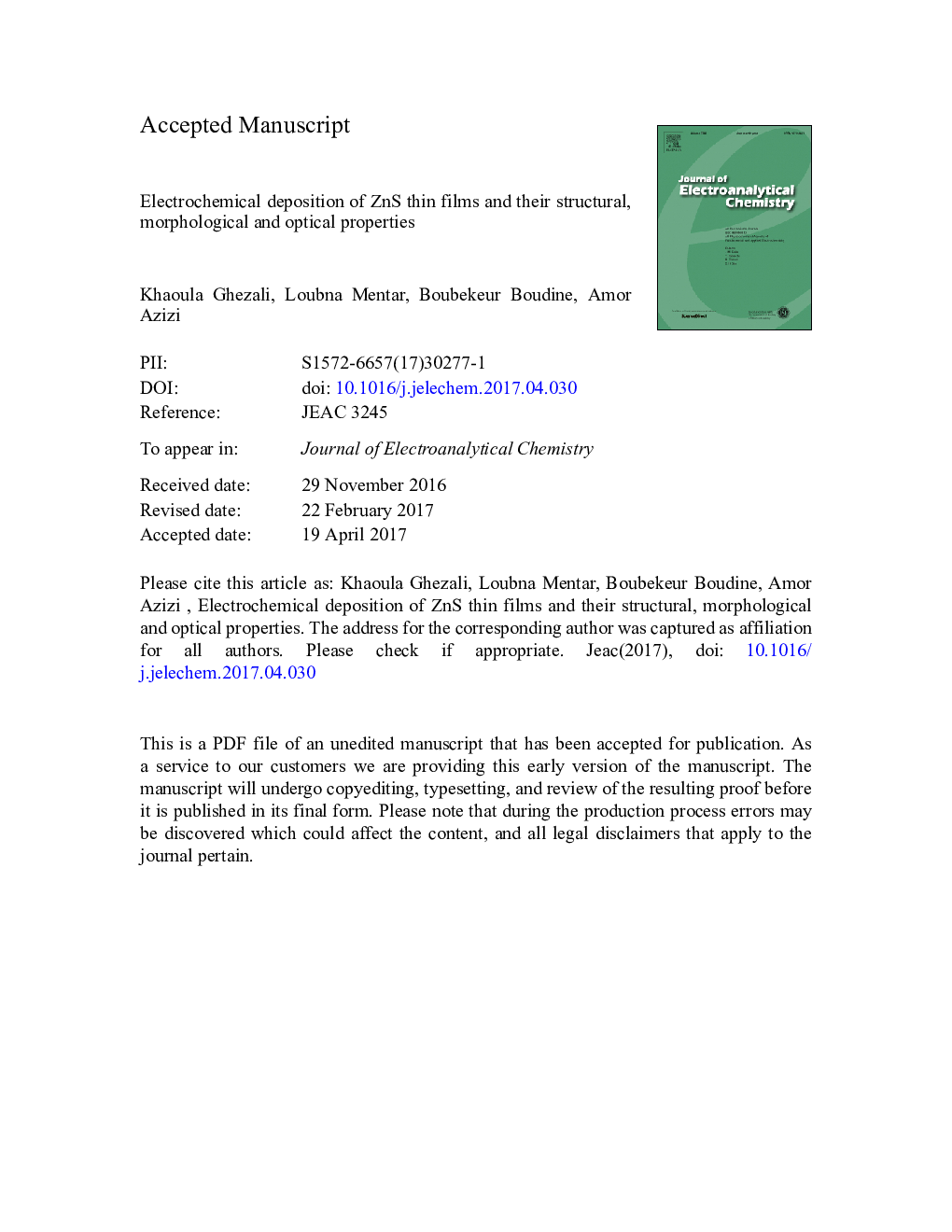| Article ID | Journal | Published Year | Pages | File Type |
|---|---|---|---|---|
| 4907873 | Journal of Electroanalytical Chemistry | 2017 | 24 Pages |
Abstract
The most interesting feature of electrodeposition is the ability to control the driving force of the deposition process by simply controlling the applied potential. In this paper, we report a study about the effect of applied potential on the properties of ZnS thin films grown by electrochemical deposition. The electrochemical, morphological, structural and optical properties of the ZnS thin films were investigated in terms of different applied potential ranging from â 1 to â 1.3 V vs. SCE. Surface roughness was estimated from atomic force microscopy (AFM) and surface morphology was investigated by scanning electron microscopy (SEM), respectively. According to the results, the surface morphology of the deposits was influenced by the applied potential, showing different rates of growth. The frequencies of nucleation and growth of ZnS crystallites during the ZnS deposition tends to be higher when the applied potentials become more negative. X-ray diffraction analysis show that the films prove crystalline behavior with the Blend structure and have preferably growth along (200) direction having c-axis perpendicular to the substrate surface. The variations of crystallite grain size, lattice constant, microstrain and dislocation densities are observed for the ZnS thin films, the dislocation density and microstrain were found to vary inversely with the crystallite size. As the deposition potential increased the optical band gap Eg was found to decrease from 3.74 to 3.50 eV and the carrier densities increase from 4.33 Ã 1020 to 3.21 Ã 1022 cmâ 3. This variation in Eg is related to the Urbach tail. All experimental observations are discussed in detail.
Related Topics
Physical Sciences and Engineering
Chemical Engineering
Chemical Engineering (General)
Authors
Khaoula Ghezali, Loubna Mentar, Boubekeur Boudine, Amor Azizi,
